Abstract
1. Synthetic analogues of prostaglandins E2 or F2a (monocyclic bisenoic prostaglandins), like the endogenous prostaglandin endoperoxides (prostaglandins G2 and H2) from platelets, and like synthetic analogues of prostaglandin H2 (bicyclic bisenoic prostaglandins), can induce aggregation of human platelets, although prostaglandins E2 and F2a themselves are inactive. 2. All the prostanoid compounds that induce platelet aggregation release 5-hydroxytryptamine from platelet dense bodies, but do not release beta-N-acetylglucosaminidase from lysosomal granules. Arachidonic acid evokes a similar response. 3. All endoperoxide analogues tested (bicyclic compounds) were powerful platelet stimulants, and all active compounds (whether mono- or bi-cyclid) apparently acted via the same receptor as the endogenous prostaglandin endoperoxides. 4. The nature and stereospecificity of substituents at positions 11 and 15 (or 16) on prostaglandin E2 are critical determinants for platelet-stimulating activity: deoxy substitution at position 11 plus methylation at position 15 (or 16) produces a potent stimulant, particularly if the groups around C-15 are in the S configuration. 5. The effects of these structural modifications are apparently due to, at least in part, a change in side-chain conformation.
Full text
PDF
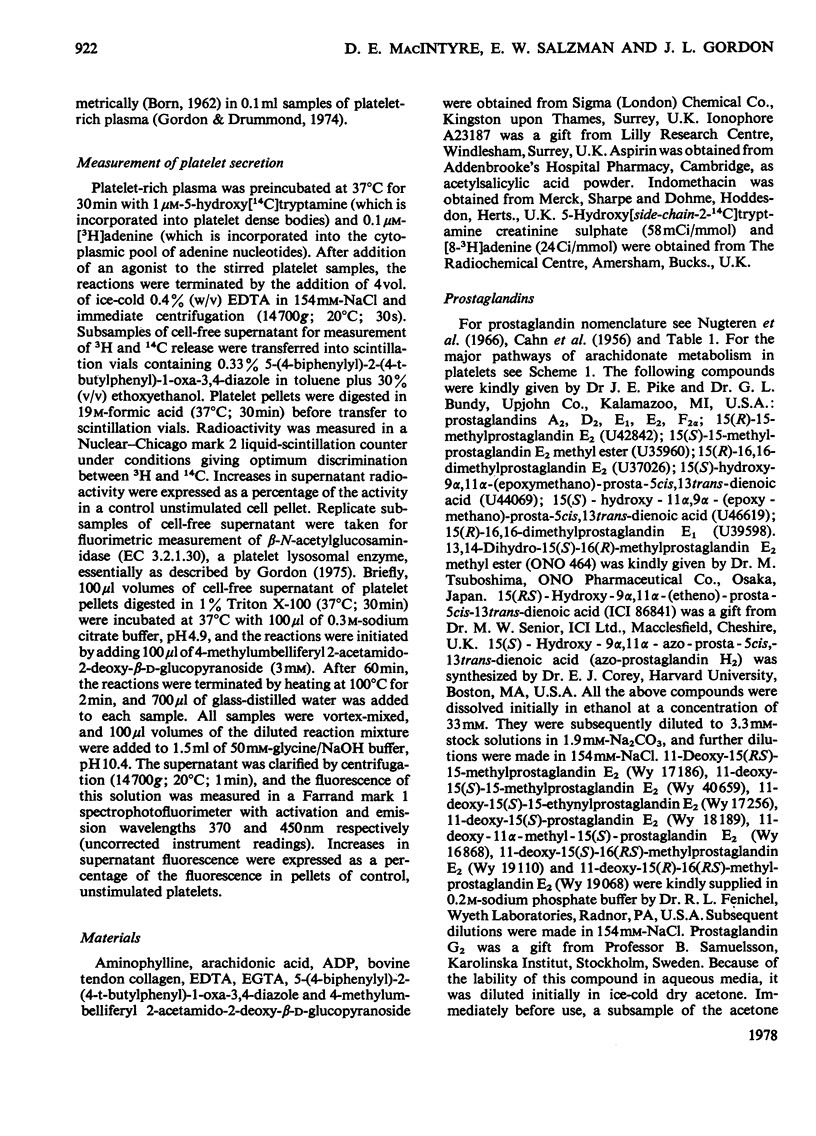
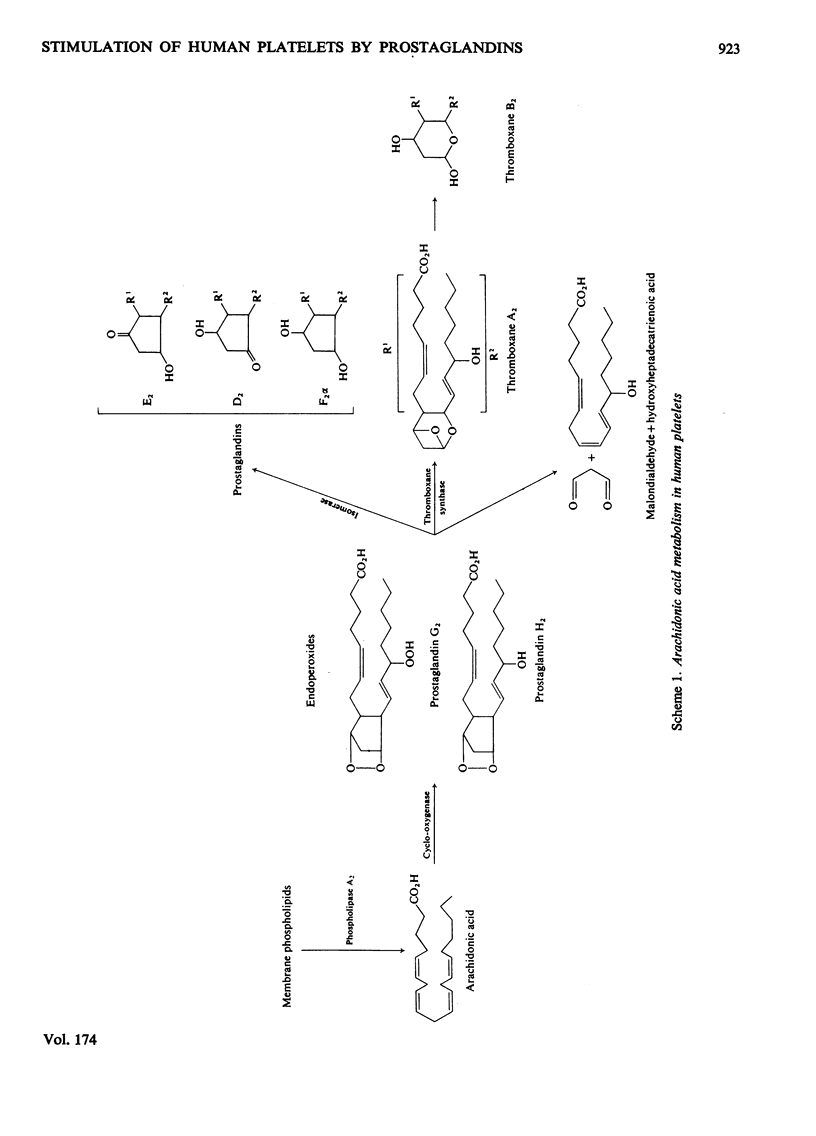
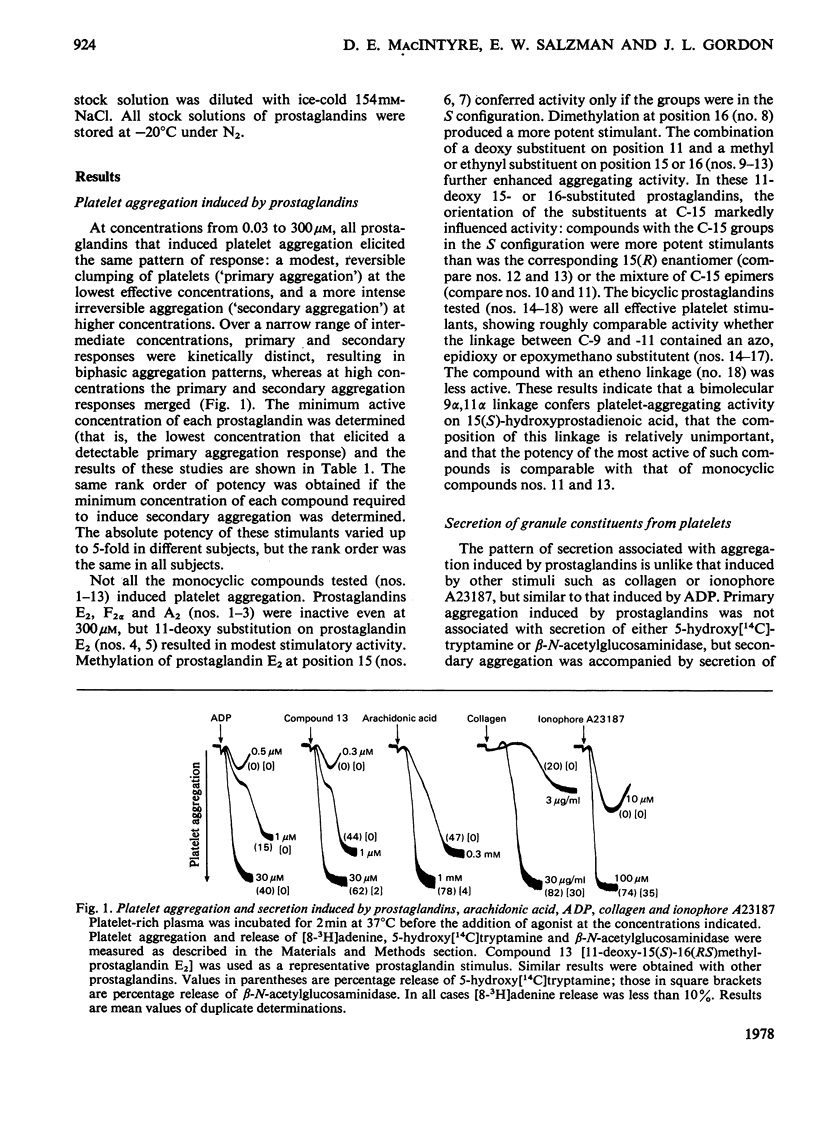
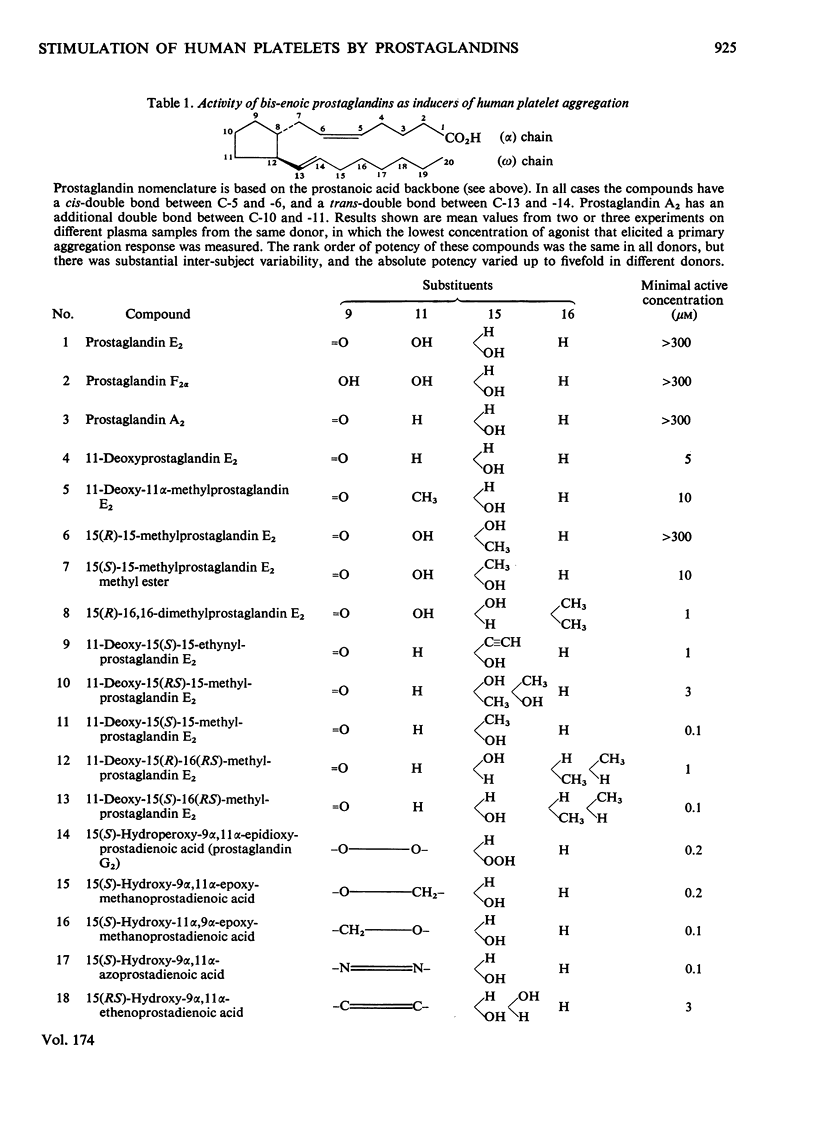
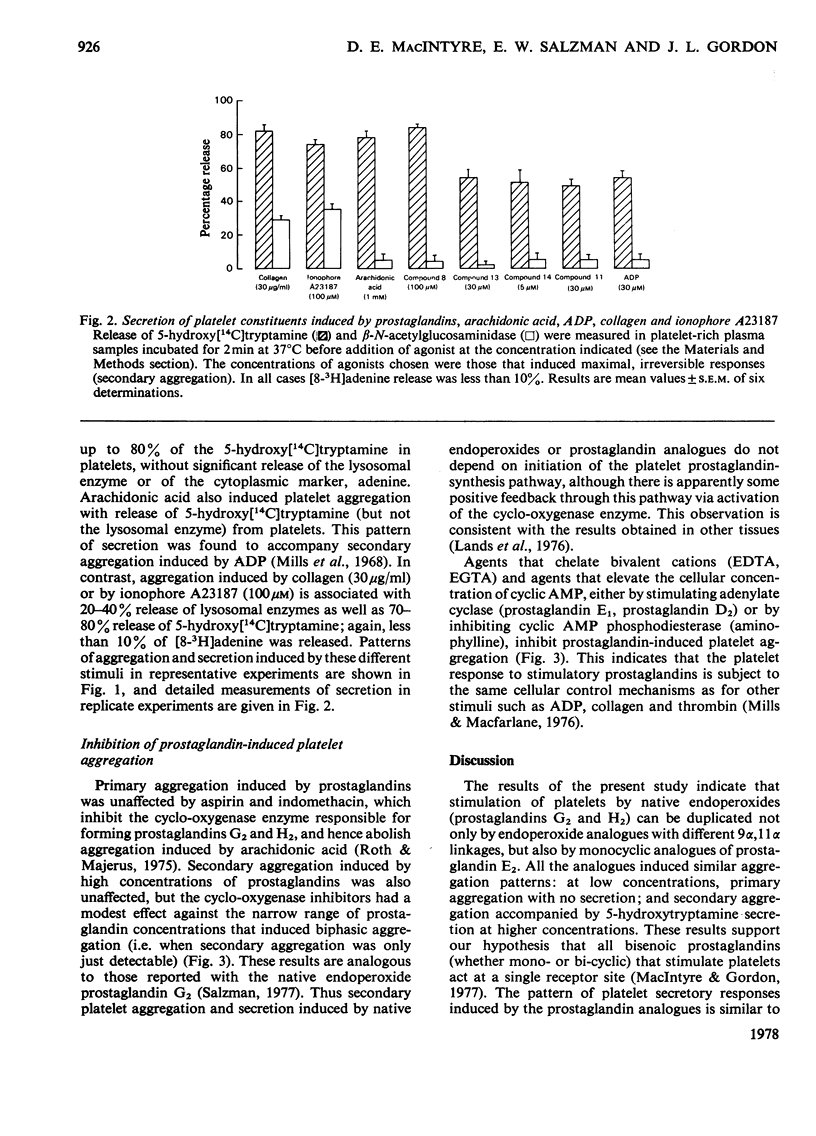
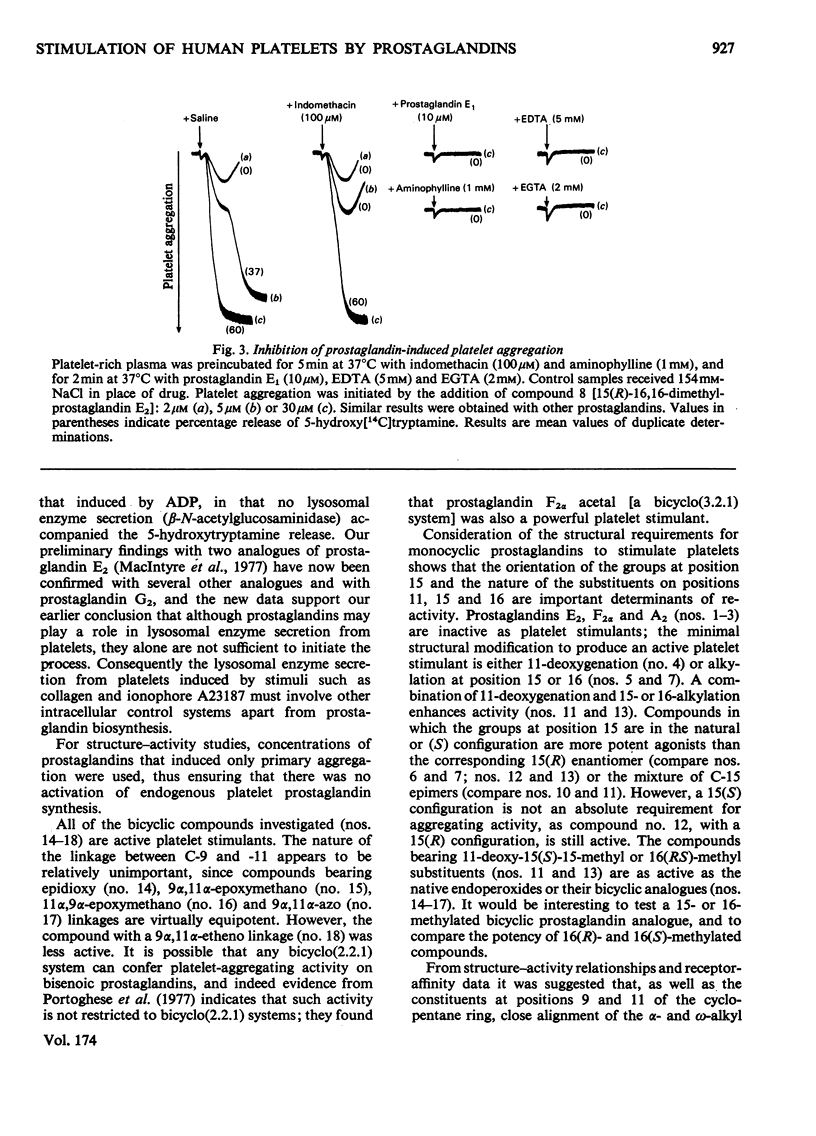
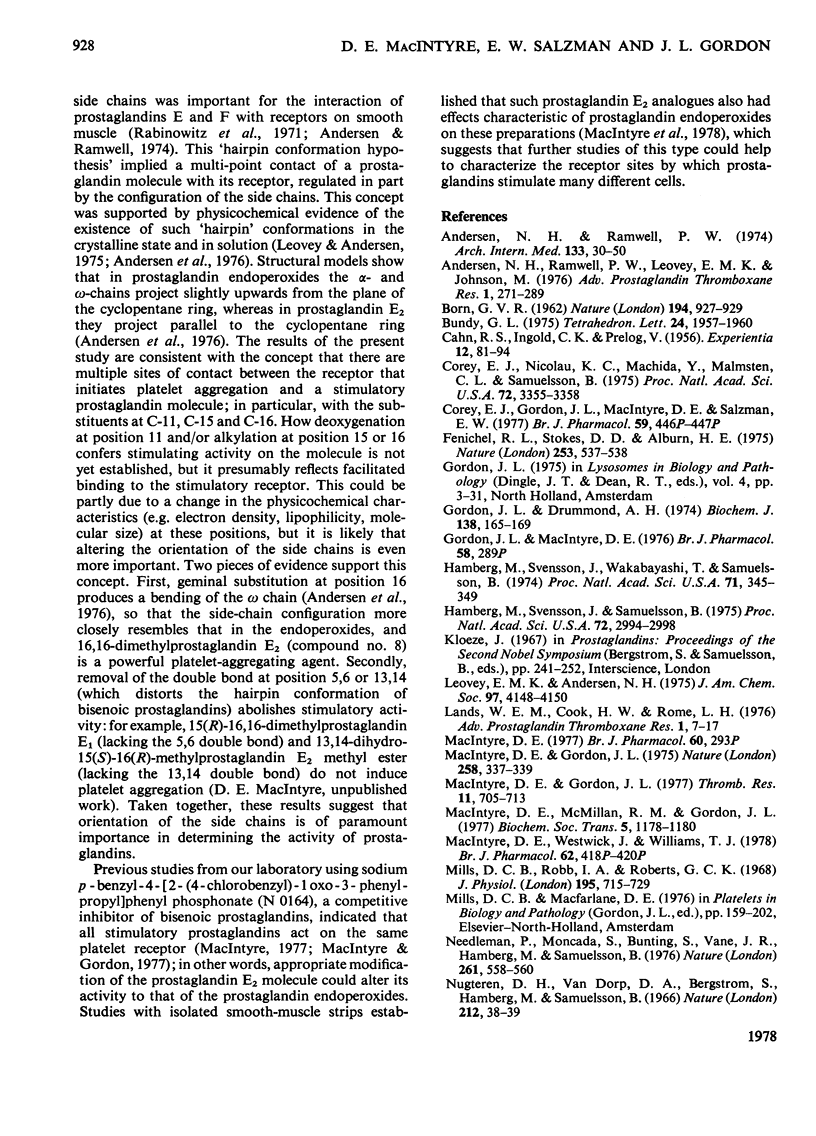
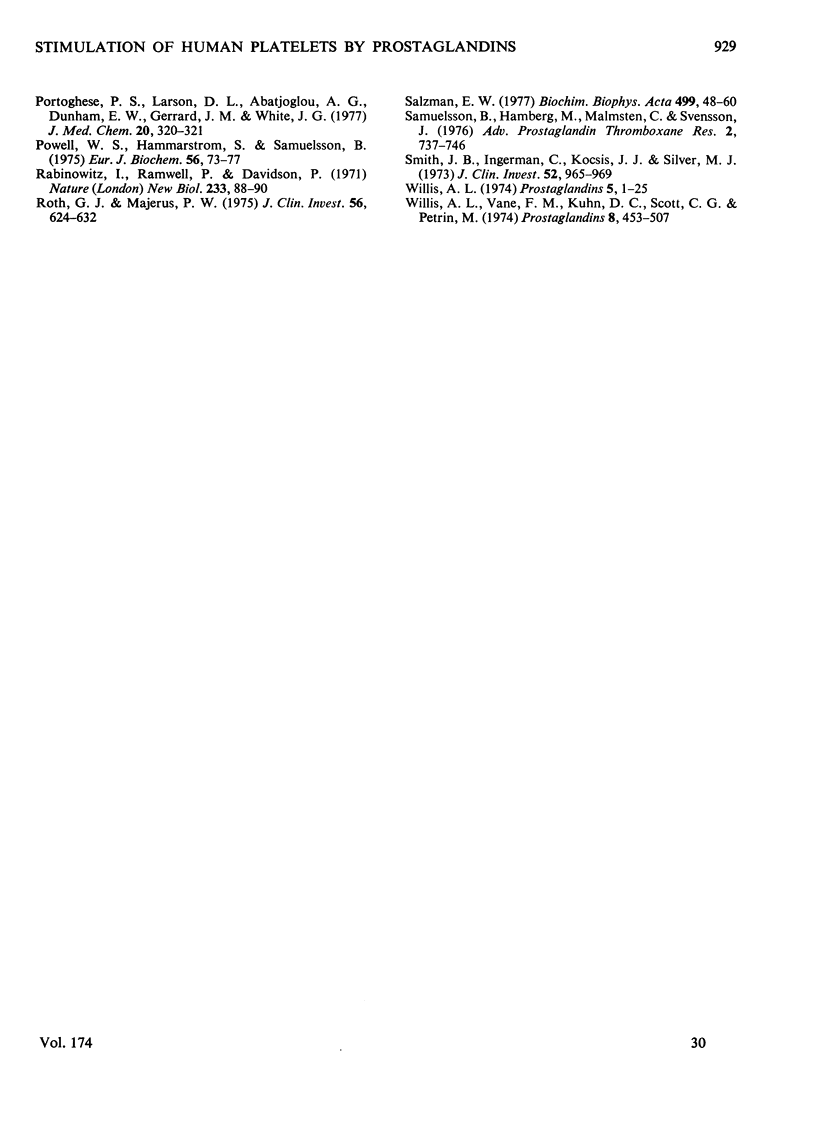
Selected References
These references are in PubMed. This may not be the complete list of references from this article.
- Andersen N. H., Ramwell P. W. Biological aspects of prostaglandins. Arch Intern Med. 1974 Jan;133(1):30–50. [PubMed] [Google Scholar]
- Andersen N. H., Ramwell P. W., Leovey E. M., Johnson M. Biological consequences of prostaglandin molecular conformations. Adv Prostaglandin Thromboxane Res. 1976;1:271–289. [PubMed] [Google Scholar]
- BORN G. V. Aggregation of blood platelets by adenosine diphosphate and its reversal. Nature. 1962 Jun 9;194:927–929. doi: 10.1038/194927b0. [DOI] [PubMed] [Google Scholar]
- Corey E. J., Nicolaou K. C., Machida Y., Malmsten C. L., Samuelsson B. Synthesis and biological properties of a 9,11-azo-prostanoid: highly active biochemical mimic of prostaglandin endoperoxides. Proc Natl Acad Sci U S A. 1975 Sep;72(9):3355–3358. doi: 10.1073/pnas.72.9.3355. [DOI] [PMC free article] [PubMed] [Google Scholar]
- Fenichel R. L., Stokes D. D., Alburn H. E. Prostaglandins as haemostatic agents. Nature. 1975 Feb 13;253(5492):537–538. doi: 10.1038/253537a0. [DOI] [PubMed] [Google Scholar]
- Gordon J. L., Drummond A. H. A simple fluorimetric microassay for adenine compounds in platelets and plasma and its application to studies on the platelet release reaction. Biochem J. 1974 Feb;138(2):165–169. doi: 10.1042/bj1380165. [DOI] [PMC free article] [PubMed] [Google Scholar]
- Hamberg M., Svensson J., Samuelsson B. Thromboxanes: a new group of biologically active compounds derived from prostaglandin endoperoxides. Proc Natl Acad Sci U S A. 1975 Aug;72(8):2994–2998. doi: 10.1073/pnas.72.8.2994. [DOI] [PMC free article] [PubMed] [Google Scholar]
- Hamberg M., Svensson J., Wakabayashi T., Samuelsson B. Isolation and structure of two prostaglandin endoperoxides that cause platelet aggregation. Proc Natl Acad Sci U S A. 1974 Feb;71(2):345–349. doi: 10.1073/pnas.71.2.345. [DOI] [PMC free article] [PubMed] [Google Scholar]
- Lands W. E., Cook H. W., Rome L. H. Prostaglandin biosynthesis: consequences of oxygenase mechanism upon in vitro assays of drug effectiveness. Adv Prostaglandin Thromboxane Res. 1976;1:7–17. [PubMed] [Google Scholar]
- Leovey E. M., Andersen N. H. Letter: Molecular basis for prostaglandin potency. I. The case for biological significance of media dependent conformational changes. J Am Chem Soc. 1975 Jul 9;97(14):4148–4150. doi: 10.1021/ja00847a058. [DOI] [PubMed] [Google Scholar]
- MacIntyre D. E., Gordon J. L. Calcium-dependent stimulation of platelet aggregation by PGE. Nature. 1975 Nov 27;258(5533):337–339. doi: 10.1038/258337a0. [DOI] [PubMed] [Google Scholar]
- MacIntyre D. E., Gordon J. L. Discrimination between platelet prostaglandin receptors with a specific antagonist of bisenoic prostaglandins. Thromb Res. 1977 Dec;11(6):705–713. doi: 10.1016/0049-3848(77)90099-8. [DOI] [PubMed] [Google Scholar]
- MacIntyre D. E., McMillan R. M., Gordon J. L. Secretion of lysosomal enzymes by platelets [proceedings]. Biochem Soc Trans. 1977;5(4):1178–1180. doi: 10.1042/bst0051178. [DOI] [PubMed] [Google Scholar]
- Mills D. C., Robb I. A., Roberts G. C. The release of nucleotides, 5-hydroxytryptamine and enzymes from human blood platelets during aggregation. J Physiol. 1968 Apr;195(3):715–729. doi: 10.1113/jphysiol.1968.sp008484. [DOI] [PMC free article] [PubMed] [Google Scholar]
- Needleman P., Moncada S., Bunting S., Vane J. R., Hamberg M., Samuelsson B. Identification of an enzyme in platelet microsomes which generates thromboxane A2 from prostaglandin endoperoxides. Nature. 1976 Jun 17;261(5561):558–560. doi: 10.1038/261558a0. [DOI] [PubMed] [Google Scholar]
- Nugteren D. H., Van Dorp D. A., Bergström S., Hamberg M., Samuelsson B. Absolute configuration of the prostaglandins. Nature. 1966 Oct 1;212(5057):38–39. doi: 10.1038/212038a0. [DOI] [PubMed] [Google Scholar]
- Portoghese P. S., Larson D. L., Abatjoglou A. G. A novel prostaglandin endoperoxide mimic, prostaglandin F2alpha acetal. J Med Chem. 1977 Feb;20(2):320–321. doi: 10.1021/jm00212a032. [DOI] [PubMed] [Google Scholar]
- Powell W. S., Hammarström S., Samuelsson B. Occurrence and properties of a prostaglandin F2alpha receptor in bovine corpora lutea. Eur J Biochem. 1975 Aug 1;56(1):73–77. doi: 10.1111/j.1432-1033.1975.tb02208.x. [DOI] [PubMed] [Google Scholar]
- Rabinowitz I., Ramwell P., Davison P. Conformation of prostaglandins. Nat New Biol. 1971 Sep 15;233(37):88–90. doi: 10.1038/newbio233088a0. [DOI] [PubMed] [Google Scholar]
- Roth G. J., Majerus P. W. The mechanism of the effect of aspirin on human platelets. I. Acetylation of a particulate fraction protein. J Clin Invest. 1975 Sep;56(3):624–632. doi: 10.1172/JCI108132. [DOI] [PMC free article] [PubMed] [Google Scholar]
- Salzman E. W. Interrelation of prostaglandin endoperoxide (prostaglandin G2) and cyclic 3',5'-adenosine monophosphate in human blood platelets. Biochim Biophys Acta. 1977 Aug 25;499(1):48–60. doi: 10.1016/0304-4165(77)90227-6. [DOI] [PubMed] [Google Scholar]
- Samuelsson B., Hamberg M., Malmsten C., Svensson J. The role of prostaglandin endoperoxides and thromboxanes in platelet aggregation. Adv Prostaglandin Thromboxane Res. 1976;2:737–746. [PubMed] [Google Scholar]
- Smith J. B., Ingerman C., Kocsis J. J., Silver M. J. Formation of prostaglandins during the aggregation of human blood platelets. J Clin Invest. 1973 Apr;52(4):965–969. doi: 10.1172/JCI107262. [DOI] [PMC free article] [PubMed] [Google Scholar]
- Willis A. L. Isolation of a chemical trigger for thrombosis. Prostaglandins. 1974 Jan 10;5(1):1–25. doi: 10.1016/s0090-6980(74)80126-7. [DOI] [PubMed] [Google Scholar]
- Willis A. L., Vane F. M., Kuhn D. C., Scott C. G., Petrin M. An endoperoxide aggregator (Lass), formed in platelets in response to thrombotic stimuli: purification, identification and unique biological significance. Prostaglandins. 1974 Dec 25;8(6):453–507. doi: 10.1016/0090-6980(74)90062-8. [DOI] [PubMed] [Google Scholar]


